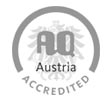What is the impact of social media in the perceived destination image of Mexico City?
October 16, 2018
Assistant Professor in the Department of New Media Technology at MU Vienna, Lyndon Nixon recently supervised the Bachelor thesis of MU student Denis Bernkopf concerning the impact of social media in perceived destination image. Lyndon presented the findings at Turitec – the congress for tourism and technologies in information communication.
“Measurement of destination image is seen as important for tourism stakeholders, both to determine how a destination is perceived among a target audience and to seek to influence that perception” says Lyndon Nixon.
Travelution claim social media is now more important to travel planning than ever before. 97% of millennials share photos of their travels online and 40% consider ‘Instagrammability’ when choosing a destination.
The research by International Management student Denis Bernkopf, and supervised by Lyndon Nixon, created an experiment to test if online photos can change a viewer’s perception of a destination. The research chose Mexico City as a destination, as it was more likely to find subjects who had not traveled to Mexico City while many popular misconceptions still surround the destination itself.
“Three groups were formed, each was shown 20 photos selected from a different source” explains Lyndon, “the first group were shown professional photography, the second were shown the most recent photos posted by Destination Marketing Organizations and the third were shown 20 images from a Google search for ‘Mexico City’”.
“A survey was used to determine the perception of Mexico City at the beginning of the experiment, then the photos were shown, then a survey determined the perception of Mexico City after seeing the photos.”
“The results suggest the Destination Marketing Organization marketing is no more effective than professional photography or popular imagery. The experiment showed that the strongest positive change could be achieved in the attributes seen initially as most negative: general infrastructure, political/economic factors, natural environment and modern architecture”.
For a more detailed look at the research findings, please see the Slideshare here.





